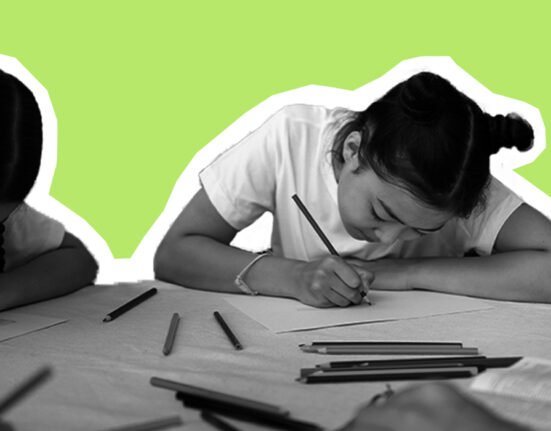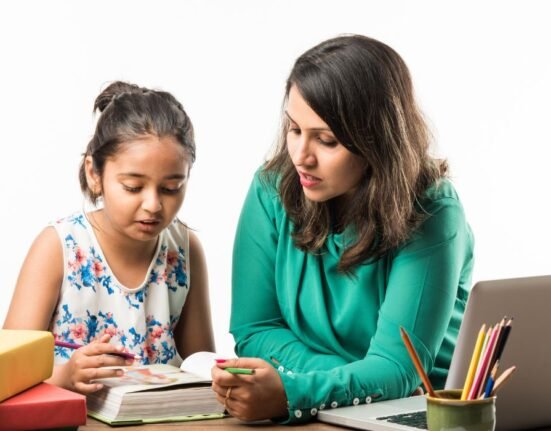Ever wonder why some lessons click, and others fly right over your head? It’s not magic; it’s the psychology of learning. Getting a handle on how we learn isn’t just for teachers; it’s vital for anyone who wants to absorb information better. When educators truly grasp these processes, they can stop guessing and start tailoring their strategies to fit what they need. That means better grades, more genuine understanding, and real academic success. Think about the different ways we’ve tried to explain learning.
Some theories, like behaviourism, focus squarely on what you can see: observable actions driven by what’s happening around you. Others, like cognitive theories, peer inside your head, examining the unseen mental gears like attention and memory. By understanding these deep mechanics of how we learn, teachers can seriously improve their classroom environments. They can factor in things like how motivated you are or how your emotions play a role. The goal? To create spaces where every single student feels empowered. Insights from all sorts of research fields continually deepen this understanding, ultimately improving educational outcomes (Berkeley.edu, 2025; Contributors, 2024). It’s about building a foundation for lifelong learning, making sure that the spark stays lit.
1.2. Overview of Key Psychological Theories
The quest to understand learning has given us a rich tapestry of psychological theories. Each offers a unique window into how people gain knowledge and master skills. Take behaviourism, for instance. It zeroes in on those observable actions and how we can influence them with things like rewards or punishments. It emphasises how external factors shape our learning journey. This perspective has led to some practical, real-world tools for managing classrooms and designing lessons.
Then there’s cognitivism. This one dives deep into the mental machinery that powers learning. It brings our attention to things like memory, how we think, and our problem-solving strategies. Meanwhile, constructivism offers a different angle, highlighting how learners actively build their understanding. They do this based on their experiences, what they already know, and their interactions with others.
And let’s not forget social learning theory, which adds another layer by acknowledging the immense power of observational learning – basically, learning by watching others – and how we model behaviour within social settings. Each of these theories, in its own right, provides incredibly valuable insights that can guide educators toward more effective teaching methods across countless different learning environments (Berkeley.edu, 2025; Contributors, 2024).
2. Behaviourism and Learning
2.1. Key Concepts in Behaviourism
Behaviourism is a cornerstone of educational psychology. Its big focus is on observable actions and how we respond to cues from our environment. At its heart are two main ideas: classical conditioning and operant conditioning. Classical conditioning, famously explored by Ivan Pavlov, is all about linking something neutral to something that naturally triggers a response. Think about Pavlov’s dogs salivating at the sound of a bell before food even arrived. That’s it (Gandhi & Mukherji, 2023).
Then you have B.F. Skinner’s operant conditioning. This one zeroes in on how reinforcement and punishment shape our actions. Positive reinforcement encourages desired behaviours by adding something good – a reward. Negative reinforcement helps remove unwanted actions by taking away something unpleasant after good behaviour. Understanding these fundamental principles allows educators to craft environments that genuinely encourage positive behaviour and keep students engaged (Gandhi & Mukherji, 2023; Psychology.org, 2025). It’s all about shaping actions through consequences.
Pro Tip: Use a token or reward system tied to specific behaviours like class participation or timely submissions. Connect the behaviour to the reinforcement for faster learning.
2.2. Applications in Education

Behaviourism plays a pretty significant role in how we set up effective learning environments and design teaching strategies in schools. A core element? Using positive reinforcement. This boosts student engagement and keeps them motivated (Psychology.org, 2025). Teachers can put behaviourist principles into practice by setting very clear goals and breaking down bigger tasks into smaller, manageable chunks. This helps students zero in on the specific actions that will move them toward their academic objectives.
Feedback is crucial here; timely, constructive input pushes progress and guides improvements (Contributors, 2024). Behaviourism also supports the idea of gamification in education, which is basically incorporating game-like elements such as points or badges. This creates dynamic classrooms where students aren’t just sitting passively; they’re actively participating and taking genuine ownership of their learning (Main, 2023). It’s about making learning compelling.
Pro Tip: Break large assignments into milestone-based tasks and give positive feedback for each stage. This shapes behaviour incrementally and keeps learners motivated.
3. Cognitivism: Mental Processes and Learning
3.1. Information Processing Theory
Information Processing Theory proposes that learning is, at its core, a mental activity. It’s all about how we acquire, store, and retrieve knowledge. This viewpoint emerged as a direct counter to behaviourism, shifting the focus inward to our internal cognitive mechanisms rather than just observable actions. At the very heart of this theory are key concepts like attention, memory, and perception, which fundamentally dictate how information gets assimilated into our minds.
Working memory is a super important part of this process, but it’s got a limited capacity. So, effective teaching strategies really need to work to reduce cognitive overload while still encouraging optimal interaction with the learning material. For example, technologies like artificial intelligence can play a significant role in easing cognitive strain by tailoring learning experiences to fit how individuals interact (Gkintoni et al., 2025). This approach helps improve retention and comprehension by adjusting resources to resonate with what students already know. Plus, cognitive techniques like visualisation and mnemonic devices can further boost this journey by strengthening recall and understanding.
Pro Tip: Use chunking in lessons: present information in 3-5 item groups. Then use retrieval practice (like a quiz or a memory game) to help move information from working memory to long-term memory.
3.2. Role of Memory in Learning
Memory is undeniably essential for learning, and we generally divide it into short-term and long-term memory. Short-term memory, often called working memory, holds information for just a brief period—usually seconds to a few minutes—and it has a pretty limited capacity, typically around seven items, a concept famously known as Miller’s Law (Cherry, 2024). Long-term memory, on the other hand, is built to store vast amounts of information for much longer durations, encompassing both declarative (facts and events) and procedural (skills and habits) forms.
To really boost memory retention, you can use several effective strategies. Mnemonic devices help you create clever connections that make recalling information much easier. Visualisation techniques are great for forming vivid mental images that aid memory. And spaced repetition involves revisiting material at increasingly longer intervals, which effectively strengthens neural pathways over time (Essaygenius.ai, 2025; Cherry, 2024). Understanding these core concepts helps educators design teaching methods that are genuinely tailored to how learners’ brains naturally process and store information.
Pro Tip: Encourage learners to create mind maps or use storytelling to link new knowledge with existing schemas. Then use spaced repetition apps like Anki to reinforce it.
4. Constructivism: Building Knowledge Through Experience
4.1. The Role of Prior Knowledge and Contextual Learning
What you already know isn’t just a nice-to-have; existing knowledge serves as an essential building block for truly meaningful learning. It lays the foundation for new information to make sense and stick. Students aren’t just empty vessels; they actively forge connections between their existing understanding and the new concepts presented to them. This process paves the way for a much deeper grasp and significantly improved retention. This whole idea perfectly aligns with constructivist theories, which argue that knowledge isn’t simply absorbed passively, but rather it’s actively constructed through hands-on engagement with the content (Contributors, 2024).
Furthermore, contextual learning seriously amplifies this entire process. It’s about embedding knowledge within practical applications and environments that are genuinely relevant to learners’ everyday lives. When educators craft lessons that are anchored in meaningful experiences, students are far more inclined to connect with the material and really see its significance. This naturally leads to heightened motivation and better comprehension (Psychology.org, 2025). By skillfully weaving together students’ prior knowledge with relevant, real-world contexts, educators can nurture richer learning experiences that resonate on multiple levels, ultimately leading to much more effective educational outcomes.
Pro Tip: Begin lessons with a real-world problem or a personal anecdote. Ask learners to relate the topic to their own experiences to activate relevant schemas.
4.2. Active Learning Strategies in Constructivist Theory
In constructivist theory, active learning techniques are paramount. They emphasise deeply engaging students in their education, allowing them to truly build knowledge through hands-on experiences and social interactions. Methods like project-based learning are fantastic because they enable students to tackle real-life challenges, which enhances their practical application of concepts. Experiential activities such as simulations and role-playing encourage learners to experiment and deepen their understanding in a very tangible way (Psychology.org, 2025).

Collaborative learning groups are also essential for knowledge construction. They facilitate rich exchanges between peers that genuinely enrich the learning experience, aligning perfectly with Vygotsky’s idea of social constructivism (Navaitienė & Stasiūnaitienė, 2021). By actively promoting teamwork and encouraging diverse viewpoints, educators can create an environment that’s incredibly conducive to personal growth and robust knowledge retention.
Pro Tip: Use the “Think–Pair–Share” model. Ask a question, give learners time to think individually, then pair up to discuss, and finally share with the class. This integrates reflection, collaboration, and active construction of knowledge.
5. Social Learning Theory: The Power of Observation and Interaction
5.1. Observational Learning Processes
Observational learning is a cornerstone of social learning theory. It’s how we pick up new behaviours just by watching others, rather than having to experience everything ourselves. This process underscores the crucial role of social interactions and internal cognitive mechanisms in shaping our behaviour. According to Albert Bandura, for observational learning to truly work, you need four key mediational processes: attention, retention, reproduction, and motivation.
First, attention: an observer has to notice the behaviour; if not, imitation is unlikely. Second, retention: you need to be able to recall that observed behaviour later on, so you can try to reproduce it. Third, reproduction: This is your ability to actually mirror what you witnessed. Finally, motivation: this is what ultimately influences your decision to imitate, usually based on whether you expect rewards or consequences (Colman, 2025; OnlineMSWprograms, 2024; Main, 2023). Observational learning is incredibly powerful for acquiring skills and modifying behaviours across countless social situations.
Pro Tip: Model the exact behaviour or task you want students to perform, either live or via video. Narrate your thought process out loud — this improves attention, retention, and reproduction.
5.2. The Role of Social Interaction in Learning Outcomes
Social interaction is essential for learning to truly succeed. It highlights just how important knowledge gained through observation and teamwork is. Bandura’s social learning theory powerfully emphasises that individuals acquire new behaviours by watching their peers, and this observation profoundly influences their actions and decisions (Colman, 2025). The principle of reciprocal determinism beautifully illustrates this dynamic interplay between our factors, our environment, and our behaviours in shaping learning outcomes.
Research consistently shows that social contexts genuinely enhance cognitive functions, including attention and memory retention. Engaging with others fosters a deeper investment in learning through the exchange of ideas and collaborative efforts (Research.com, 2025). Educators can strategically leverage these powerful social dynamics to create highly effective teaching strategies that genuinely cater to students’ diverse needs.
Pro Tip: Use structured peer-teaching activities. Assign “learning buddies” and let them teach mini-concepts to one another. Teaching reinforces learning better than passive review.
6. Cognitive Functions Related to Effective Learning
6.1. Attention: Focused Engagement in Learning Tasks
Attention is utterly critical in learning; it directly impacts how information is taken in and retained. Being able to concentrate on specific stimuli while effectively ignoring distractions is fundamental for effective education. Research consistently shows that attention is a limited resource, so educators need to design environments that genuinely foster sustained focus. Using engaging teaching methods or introducing novel elements into lessons can significantly boost students’ attention spans, making them much more receptive to new concepts (WGU, 2024).
There’s also a very strong link between attention and motivation: learners participate more deeply when they perceive the material as relevant or truly engaging. Customising content to match students’ interests can dramatically improve both focus and retention (Gkintoni et al., 2025). Understanding the intricate nature of attention allows educators to enhance learning outcomes and cultivate vital lifelong skills.
Pro Tip: Begin classes with a “hook” — an interesting fact, image, or question to trigger curiosity. Then break the session into short segments (10–15 mins) with brief active tasks in between.
6.2. Perception: Understanding Information Through Senses
Perception is a critical player in the learning process, profoundly shaping how sensory information is interpreted. This fundamental cognitive skill helps individuals navigate their environment and acquire knowledge. Cognitive learning theories, especially those put forth by Piaget, emphasise that young children learn primarily through their senses during the sensorimotor stage, underscoring the vital need for rich tactile and visual experiences. Effective learning environments, therefore, should aim to stimulate multiple senses to enhance perceptual experiences.
For instance, incorporating visual aids and hands-on activities can significantly improve information retention by strategically leveraging students’ perceptual strengths. Moreover, attention plays a huge role in information assimilation; more focused learners are inherently better at perceiving and retaining details. Grasping these dynamics empowers educators to craft strategies that cater to diverse sensory preferences, ultimately improving learning outcomes (Ring et al., 2018; Cherry, 2024).
Pro Tip: Use multi-sensory learning tools — combine visual aids (charts, videos) with hands-on tasks or physical models. This caters to different perceptual strengths and improves recall.
6.3. Metacognition: Self-awareness and Regulation in Learning
Metacognition involves both being aware of and actively managing your learning processes, which is essential for effective education. It includes two key components: metacognitive knowledge, which is your understanding of your cognitive abilities and the strategies you use, and metacognitive regulation, which encompasses the actual planning, monitoring, and evaluating of your learning efforts. Actively engaging in metacognitive practices allows learners to genuinely assess their understanding and adapt their methods for consistently better outcomes.

Research indicates that many students often struggle with self-regulation and simply lack insight into truly effective learning techniques (Carpenter et al., 2022). Reflecting on your cognitive processes helps learners pinpoint their strengths and weaknesses when solving problems. Successful learners consistently demonstrate advanced metacognitive skills by actively interacting with content and flexibly adjusting their strategies for different learning contexts (Navaitienė & Stasiūnaitienė, 2021). This ultimately fosters significant resilience in overcoming educational challenges.
Pro Tip: Implement “Exit Tickets” — at the end of a lesson, ask learners to write what they understood, what confused them, and how they plan to study it. This fosters self-regulation and reflection.
7. Emotional and Motivational Factors Influencing Learning
7.1. Intrinsic vs. Extrinsic Motivation: Definitions and Implications
Intrinsic motivation is when you engage in an activity purely for the joy it brings. It springs from a genuine passion for learning or a deep, sincere interest in specific subjects. This internal drive encourages you to value knowledge for its inherent worth, a concept strongly emphasised by Deci and Ryan’s Self-Determination Theory (SDT). SDT highlights that fulfilling fundamental psychological needs—like feeling autonomous (in control) and competent (good at something)—is crucial for fostering intrinsic motivation.
Conversely, extrinsic motivation comes from outside forces, such as rewards or the desire to avoid negative consequences. For instance, learners might study intensely just to earn accolades or to steer clear of punishment. Research consistently indicates that while external motivators can certainly lead to immediate compliance, they often diminish long-term engagement and ultimately erode intrinsic enthusiasm for learning tasks (Cherry, 2023). Skilled educators can significantly enhance intrinsic motivation by offering genuine choices and by cleverly connecting lessons to real-life situations, thereby cultivating a lasting love for learning rather than simply fostering a reliance on external rewards (Essaygenius.ai, 2025).
Pro Tip: Give students choices — in assignments, topics, or formats (e.g., essay, video, poster). Autonomy boosts intrinsic motivation and makes learning feel personal.
7.2. The Role of Emotions in Cognition and Performance
Emotions wield a significant influence over both cognition and performance in educational settings. Positive feelings, like enthusiasm or curiosity, genuinely enhance focus and cognitive processing, leading to deeper engagement and better information retention. Conversely, negative emotions, such as anxiety or frustration, can severely disrupt concentration and hinder memory retrieval, significantly reducing learning effectiveness. Interestingly, incorporating emotional content into learning materials can aid memory consolidation by activating specific neurobiological processes (Gkintoni et al., 2025).
The relationship between motivation and emotional well-being is also undeniably crucial: students who feel genuinely supported are consistently more motivated to learn (McMahon et al., 2021). Educators can proactively foster emotional health by building strong, positive relationships and by employing effective stress-reduction techniques within the classroom. By deeply understanding the intricate links between emotions and learning outcomes, teachers can design instructional methods that thoughtfully consider and support their students’ emotional experiences.
Pro Tip: Give students choices — in assignments, topics, or formats (e.g., essay, video, poster). Autonomy boosts intrinsic motivation and makes learning feel personal.
8. Neuroplasticity and Its Role in Lifelong Learning
8.1. Understanding Neuroplasticity: The Brain’s Ability to Adapt
Neuroplasticity is truly remarkable: it’s your brain’s extraordinary ability to constantly reorganise itself by forming brand new neural connections throughout your entire life. As UNESCO (2021) points out, learning isn’t merely about accumulating facts; it involves rewiring neural pathways, enabling individuals to adapt their thoughts and behaviours based on every single experience they have. While most of your neurons are indeed created at birth, neuroplasticity remains critically important for strengthening existing synapses and forming new ones through continuous learning.
This incredible adaptability is vital in education, as understanding neuroplasticity allows educators to craft engaging environments that genuinely enhance memory retention. Furthermore, research consistently indicates that neuroplasticity is essential for recovery from cognitive injuries, powerfully highlighting its immense significance for lifelong learning (UNESCO, 2021). Your brain is not static; it’s a dynamic, ever-changing landscape.
Pro Tip: Educate learners about how their brains change with effort. Use simple diagrams or analogies (e.g., “your brain is like a muscle”). This promotes a growth mindset and resilience.
8.2. Practical Implications for Educators
Educators can harness the principles of neuroplasticity to supercharge lifelong learning strategies. Understanding that the brain is constantly adapting empowers teachers to create environments that are both engaging and intellectually challenging. Techniques like spaced repetition, using diverse instructional methods, and emphasising active learning all work to boost neural connections and significantly improve retention.
Additionally, incorporating technology, such as AI-driven adaptive learning platforms, can truly customise educational experiences based on individual cognitive needs (Gkintoni et al., 2025). Cultivating a supportive environment that smartly balances challenges with achievable goals is crucial for maintaining motivation and reducing stress, both key factors for truly effective learning. Educators should also consistently emphasise the importance of proper rest and good nutrition, as these profoundly impact cognitive functions directly related to memory (Berkeley.edu, 2025).
Pro Tip: Rotate activities that involve different learning methods weekly — reading, group work, projects, tech tools — to encourage brain adaptability and deeper neural integration.
9. Feedback, Reinforcement, and Environment’s Influence on Learners’ Success
9.1. Effective Feedback Mechanisms
Strong, well-designed feedback systems are essential for any thriving learning atmosphere. Prompt feedback, delivered quickly, genuinely, empowers students to understand their performance and make necessary adjustments, which profoundly enhances their educational journey (Edume.com, 2025). Critically, constructive feedback should not only inform but also inspire improvement and elevate students’ ambitions (Stenger, 2014). Effective feedback dramatically boosts both content understanding and cognitive abilities through an iterative, continuous learning process (Stenger, 2014).

The quality of feedback also directly impacts student motivation and their ability to self-regulate. It needs to be precise, clearly focused on the task, and delivered in a supportive manner to avoid discouragement (Mamoon-Al-Bashir et al., 2016). Integrating peer feedback can further enrich the experience by fostering collaboration and promoting deeper insights among students (Yan & Carless, 2022). By cultivating a classroom culture that genuinely embraces feedback as a powerful tool for growth, educators can significantly maximise student engagement and ultimate achievement.
Pro Tip: Rotate activities that involve different learning methods weekly — reading, group work, projects, tech tools — to encourage brain adaptability and deeper neural integration.
9.2. Creating a Supportive Study Environment
Building a truly nurturing educational environment is fundamental for cultivating impactful learning experiences. This involves creating a setting where students feel genuinely secure, deeply appreciated, and highly motivated to immerse themselves in the subject matter fully. As highlighted in Essaygenius.ai (2025), positive emotions like enthusiasm and curiosity significantly enhance cognitive processing and information retention, making it imperative for educators to foster an atmosphere that actively nurtures these sentiments.
Practical approaches include forging strong, meaningful relationships between teachers and students, consistently offering constructive feedback, and proactively alleviating stressors within the classroom. Furthermore, insights from Ring et al. (2018) can brilliantly guide the development of settings that encourage intrinsic motivation through novelty and engaging experiences.
Classrooms should actively promote exploration and inquiry while granting students the freedom to take genuine charge of their learning journey. By thoughtfully integrating diverse instructional strategies tailored to various learning preferences—as elaborated in Edume.com (2025)— educators can ensure that every single student discovers clear pathways to success within a supportive and empowering framework.
Pro Tip: Set a class norm: “We grow through mistakes.” Publicly normalise struggles and praise effort, not just outcomes. This fosters emotional safety and risk-taking in learning.
10. Conclusion
Incorporating deep psychological insights into truly effective teaching practices demands a comprehensive strategy. One that genuinely acknowledges the unique needs, motivations, and cognitive processes of every learner. Understanding core concepts like Self-Determination Theory allows educators to foster autonomy, competence, and connection among students, which directly enhances their intrinsic motivation (Navaitienė & Stasiūnaitienė, 2021).
Additionally, the principles of constructivism powerfully encourage teachers to design learning experiences that actively promote participation and deep self-reflection, enabling students to truly build knowledge through meaningful, hands-on encounters. It’s also essential to integrate social learning techniques that cleverly utilise peer interactions and observational learning for far deeper engagement (Essaygenius.ai, 2025). By skillfully leveraging these profound psychological insights, educators can create incredibly supportive environments that not only significantly improve educational outcomes but also cultivate those vital habits of lifelong learning in their students. It’s about empowering growth.
FAQs
1. Why is understanding learning psychology important for educators?
It helps teachers tailor strategies for diverse student needs, boosting academic success and managing classrooms effectively. It’s about smart teaching.
2. What’s the main difference between behaviourism and cognitivism?
Behaviourism focuses on observable actions and external influences. Cognitivism explores internal mental processes like memory and attention.
3. How does neuroplasticity impact lifelong learning?
Neuroplasticity is the brain’s ability to rewire itself. This means learning isn’t just gaining facts; it’s physically changing your brain for continuous adaptation.
4. What’s the role of emotions in learning?
Emotions significantly influence learning. Positive feelings enhance focus and retention, while negative ones can hinder concentration and memory. They matter.
5. How can teachers use feedback effectively?
Prompt, constructive, and specific feedback helps students understand performance, make adjustments, and fosters continuous improvement and motivation.
References +
References +
[1] Learning: Theory and Research. (2025). https://gsi.berkeley.edu/media/Learning-Theory-and Research.pdf
[2] NU Editorial Contributors. (2024). Behaviourism in Education: What Is Behavioural Learning Theory?. https://www.nu.edu/blog/behaviourism-in-education/
[3] Essay on Learning New Things. (2025). https://essaygenius.ai/essay/essay-on-learning-new-things
[4] Helen Colman. (2025). Understanding Social Learning Theory: Key Principles and Applications. https://www.ispringsolutions.com/blog/social-learning-theory
[5] NU Editorial Contributors. (2024). Learning Theories: Five Theories of Learning in Education | NU. https://www.nu.edu/blog/theories-of-learning/
[6] Introduction To Educational Psychology Theory | Psychology.org. (2025). https://www.psychology.org/resources/educational-psychology-theories/
[7] Kendra Cherry. MSEd. (2023). Intrinsic Motivation vs. Extrinsic Motivation: What’s the Difference?. https://www.verywellmind.com/differences-between-extrinsic-and-intrinsic motivation-2795384
[8] Shana K. Carpenter, Steven C. Pan, Andrew C. Butler. (2022). The science of effective learning with spacing and retrieval practice. https://www.nature.com/articles/s44159-022-00089-1
[9] Paul Main. (2023). Theory of Behaviourism in Learning. https://www.structurallearning.com/post/theory-of-behaviourism-in-learning
[10] Julita Navaitienė, Eglė Stasiūnaitienė. (2021). The Goal of the Universal Design for Learning: Development of All to Expert Learners. https://link.springer.com/chapter/10.1007/978-3-030-80658-3_2
[11] Social Learning Theory & Its Modern Application in Education for 2025 | Research.com. (2025). https://research.com/education/social-learning-theory
[12] Emer Ring, Lisha O’Sullivan, Marie Ryan, Patrick Burke. (2018). Theoretical Perspectives on Children’s learning and development. https://ncca.ie/media/4425/theoretical-perspectives-on childrens-learning-and-development.pdf
[13] A Guide to Social Learning Theory in Education. (2024). https://www.wgu.edu/blog/guide social-learning-theory-education2005.html
[14] Why Giving Instant Feedback is Important for Effective Learning. (2025). https://www.edume.com/blog/role-of-feedback-in-improving-learning
[15] Evgenia Gkintoni, Hera Antonopoulou, Andrew Sortwell. (2025). Challenging Cognitive Load Theory: The Role of Educational Neuroscience and Artificial Intelligence in Redefining Learning Efficacy. https://pmc.ncbi.nlm.nih.gov/articles/PMC11852728/
[16] IBE — Science of learning portal — Neuroplasticity: How the brain changes with learning. (2021). https://solportal.ibe-unesco.org/articles/neuroplasticity-how-the-brain-changes-with-learning/
[17] Mustafa H. Gandhi, Pinaki Mukherji. (2023). Learning Theories. https://www.ncbi.nlm.nih.gov/books/NBK562189
[18] Kendra McMahon, Alison Lee, Pete Etchells, Lisa Howarth, Kate Humphreys, Darren McKay, Emma Arblaster, Emma Asprey, Kerry-Anne Barber, Lynn Salter. (2021). The Learning Sciences and the Core Content Framework for Initial Teacher Training. https://www.bathspa.ac.uk/media/bathspaacuk/projects/The-Core-Content-Framework-for-ITE-and-the-Learning-Sciences-(2020)-accessible.pdf
[19] Marianne Stenger. (2014). 5 Research-Based Tips for Providing Students with Meaningful Feedback. https://www.edutopia.org/blog/tips-providing-students-meaningful-feedback marianne-stenger
[20] Kendra Cherry. MSEd. (2024). Learning Theories In Psychology. https://www.verywellmind.com/learning-theories-in-psychology-an-overview-2795082
[21] Introduction to Social Learning Theory. (2024). https://www.onlinemswprograms.com/social-work/theories/social-learning-theory/
[22] Md. Mamoon-Al-Bashir, Md. Rezaul Kabir, Ismat Rahman. (2016). Journal of Education and Practice. https://files.eric.ed.gov/fulltext/EJ1105282.pdf
[23] Zi Yan, David Carless. (2022). Self-assessment is about more than self: the enabling role of feedback literacy. https://www.tandfonline.com/doi/full/10.1080/02602938.2021.2001431













Leave feedback about this